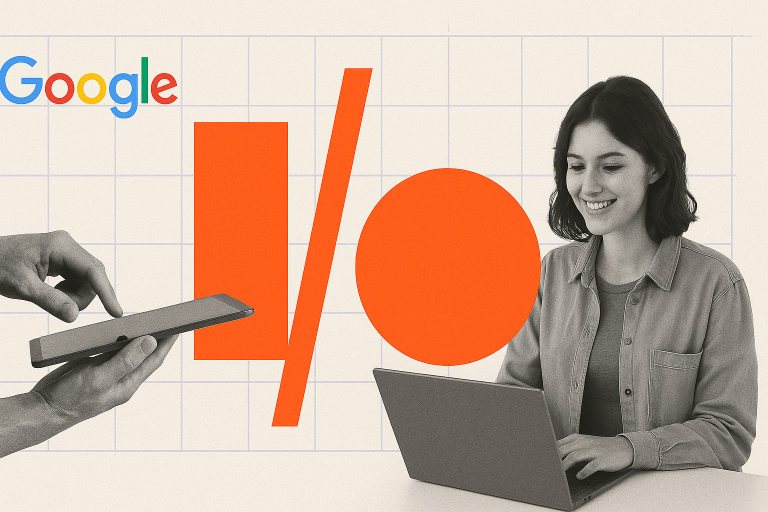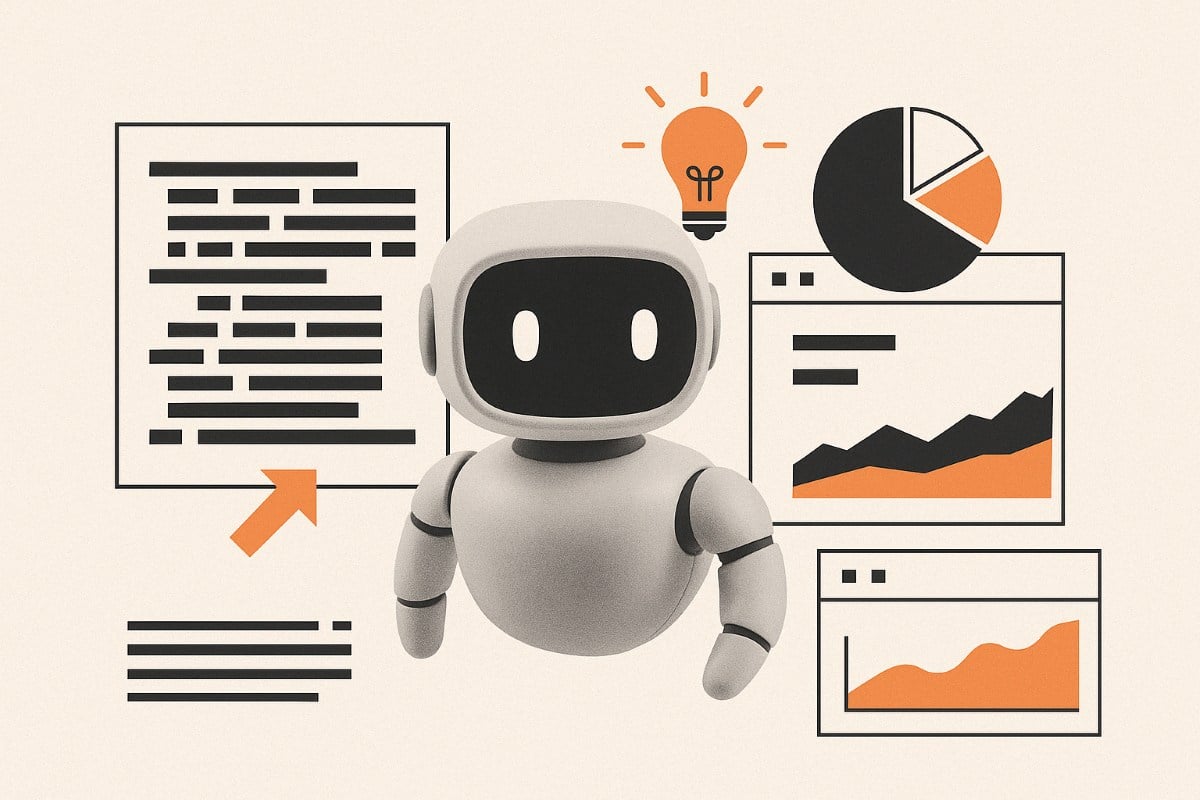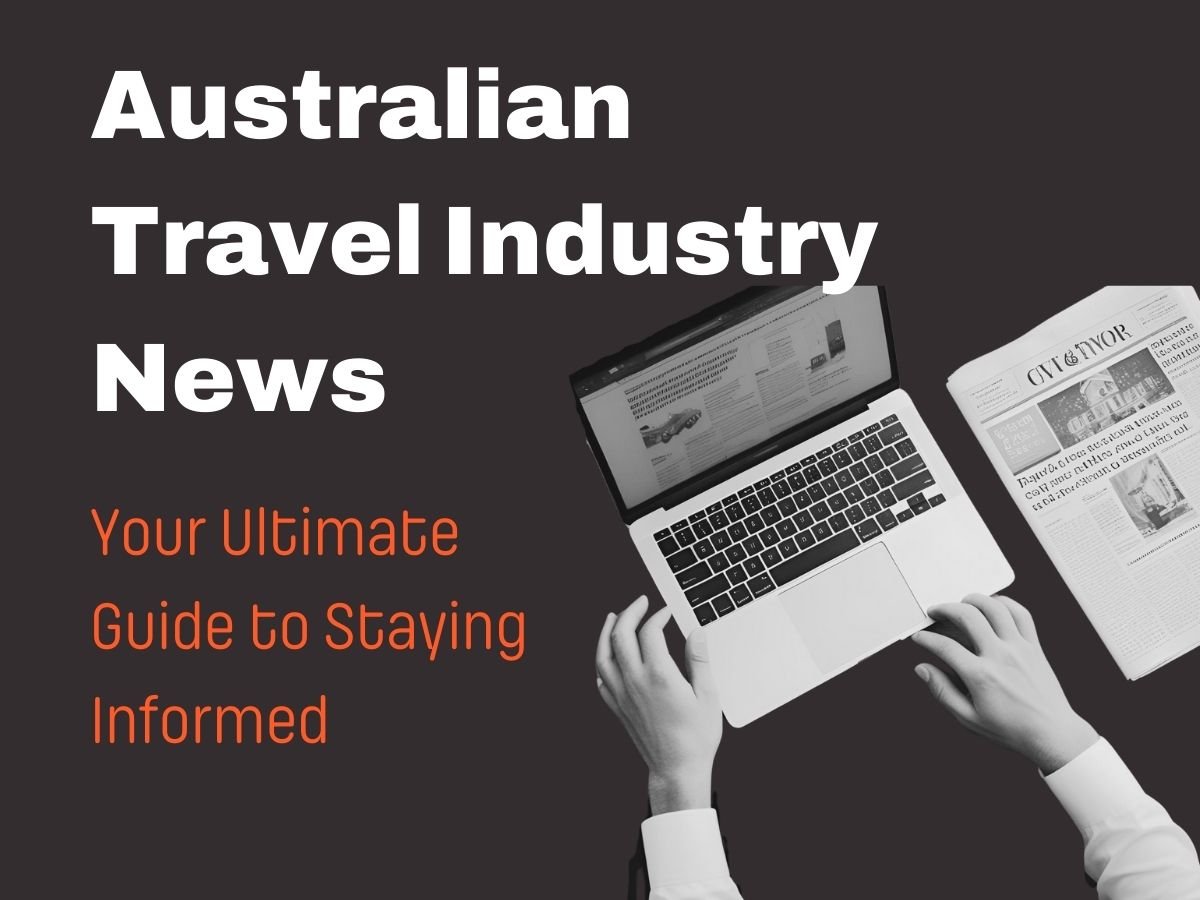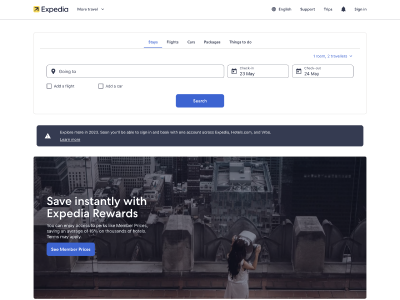Thinking Out Loud: This is a working draft, useful ideas and analysis shared before they’re perfectly polished. Finger on the pulse and ideas worth discussing, not flawless prose nor in-depth research.

The digital landscape is undergoing a seismic shift. The once-reliable firehose of organic traffic that publishers enjoyed from search and social platforms is drying up, and the ripple effects are beginning to be felt across the entire advertising ecosystem. For brands that have long relied on the reach and influence of web publishers, this new reality presents a complex and urgent challenge.
Recent data on publisher traffic loss paints a stark picture of the situation. A survey of Digital Content Next (DCN) members revealed a median year-over-year decline in referral traffic from Google Search of 10% over just eight weeks in mid-2025.
This decline is primarily attributed to the rise of AI-powered search summaries, such as Google’s AI Overviews, which are increasingly answering user queries directly on the search results page, thereby eliminating the need to click through to a publisher’s website.
The Daily Mail, for instance, has reported a staggering 80-90% drop in click-through rates when an AI Overview is present, and some studies have shown traffic drops of up to 40% for major publishers.
This is more than just a publisher problem; it’s a brand advertising disruption. As publishers grapple with this new reality, the downstream effects are beginning to reshape the strategies and budgets of brand advertisers. The decline in publisher revenue directly impacts the quality, pricing, and availability of advertising inventory.
Here, I examine the critical implications for brands and explore strategies they can employ to navigate this evolving landscape.
The Cascade of Impact: From Publishers to Brands

Source: poorly thought & drawn diagram by yours truly.
With the diagram above, I’ve tried to illustrate how AI search & AI mode/overview trigger a cascade of impacts that ultimately affect brand marketing effectiveness.
- What begins as publisher traffic loss
- quickly becomes a revenue crisis,
- forcing publishers into paid acquisition strategies
- that directly compete with brand advertisers.
- This competition drives up costs
- while simultaneously reducing the total pool of available impressions,
- creating a perfect storm that undermines traditional marketing measurement and attribution models.
Understanding the flow-on effect of reduced publisher traffic is critical for CMOs and marketing leaders planning their 2025-2026 strategies. The impact of AI Overviews on publisher traffic, AI-powered search and Social search overall represents a fundamental shift in how audiences discover and consume content online.
Publisher Traffic Impact: The Data
The scale and scope of traffic losses vary significantly across different types of publishers and business models.
The table below synthesises data from Detailed.com’s analysis of public company earnings calls and industry reports on declining publisher revenue:
|
Publisher/Company
|
Industry
|
Traffic Impact
|
AI/Search Comments
|
Source
|
|
Daily Mail
|
News
|
80-90% lower CTR when AI Overview present
|
Dramatic decline from 56% in May 2025
|
Digiday
|
|
DCN Members (Median)
|
Premium Publishers
|
10% YoY decline (8 weeks)
|
Non-news down 14%, news down 7%
|
Digital Content Next
|
|
IAC Inc.
|
Media
|
Google traffic dropped from 52% to 28% of sessions
|
Significant shift in traffic composition
|
Fitch Ratings
|
|
Future plc
|
Media
|
Search traffic declined from 72% to 58% of total
|
Over 3-year period
|
Detailed.com
|
|
1-800-Flowers
|
E-commerce
|
6.7% revenue decline Q4
|
“Traditional SEO continued to decline”
|
Detailed.com
|
|
VerticalScope
|
Online Communities
|
Zero-click reducing referrals
|
Forums benefited initially, now impacted
|
Detailed.com
|
|
E.W. Scripps
|
Broadcasting/Media
|
Negative outlook
|
“Not a net positive for publishers”
|
Detailed.com
|
|
Monday.com
|
SaaS
|
Weakness in lower-end business
|
“Start of a trend, being more conservative”
|
Detailed.com
|
|
LiveChat Software
|
SaaS
|
Negative impact on acquisition
|
Google changes impacting customers too
|
Detailed.com
|
|
TechTarget
|
B2B Media
|
Search under 50% of strategy
|
AI referrals growing with higher conversion
|
Detailed.com
|
|
ZipRecruiter
|
Job Platform
|
AI overviews impacting job seeker traffic
|
Research-type questions most affected
|
Detailed.com
|
|
Booking.com
|
Travel
|
Traditional search still growing YoY
|
LLM leads small but growing
|
Detailed.com
|
|
TripAdvisor
|
Travel
|
GEO traffic growing exponentially
|
Small base, higher intent traffic
|
Detailed.com
|
|
Intuit
|
Financial Software
|
Traffic up significantly
|
AI search only 1% of overall traffic
|
Detailed.com
|
The data reveals several critical patterns in publisher audience loss.
News publishers and e-commerce businesses relying on informational content are experiencing the most severe declines, while strong brand publishers with direct traffic and diverse acquisition channels show greater resilience. Notably, AI-first traffic (generative engine optimisation or GEO) remains small, typically under 5% of total traffic, but is growing exponentially from a low base.
AI Overview Trigger Rate and Traffic Impact by Category
The table below synthesises data from multiple industry studies (SE Ranking, Search Engine Journal, Zapier/SE Ranking, Similarweb, Pew Research, DCN surveys, and press reports) to show how AI Overviews affect different content verticals and publisher types.
| Category | AIO Trigger Rate | Reported Traffic / CTR Impact | Key Notes |
|---|---|---|---|
| Relationships | 40.6%–54.8% | High zero-click risk | Highest AIO trigger rate across all studies |
| Food & Beverage | 23.6%–37.1% | Moderate-high zero-click risk | Informational recipe/how-to queries common |
| Business | 18.5%–38.8% | Moderate traffic decline | 41.9% intersection with top 10 results |
| Technology | 17.2%–33.7% | Moderate-high zero-click risk | Strong AIO presence for informational queries |
| Self-Care & Wellness | 15.7%–29.6% | Moderate traffic decline | Growing AIO presence in 2024 |
| Health / Healthcare | 12.6%–23.6% (general); 17.1% (YMYL-specific) | High zero-click for basic queries | 68% auto-generated despite YMYL caution |
| Sports & Exercise | 0.3%–32.3% | High zero-click for scores/stats | Simple facts (scores, results) answered by AI |
| Finance / Investment | 1.8%–10.1% | Lower AIO presence; higher CTR retained | YMYL caution; only ~47% coverage vs 94% in beauty |
| Legal | 0.6%–28.3% | Growing AIO presence | Jumped from 0.6% to 28% through 2024 |
| Insurance | 0.6% | Low AIO exposure | YMYL topic; conservative rollout |
| Entertainment / Hobbies | 4.0%–6.3% | Moderate; mostly “generate” button | Only 4–6% auto-generated |
| Travel | 1.3%–19.3% | Travel blogs hit hard (up to 90% drop) | The Planet D shut down after 90% traffic loss |
| Real Estate | 0.1%–15.2% | Low AIO exposure | More “generate” buttons than auto AIO |
| Ecommerce / Retail | 0.3%–1.3% | Low AIO; commercial intent protected | Dropped from 25.8% to 1.3% in 2024 |
| Fashion & Beauty | 0.2%–0.8% | Low AIO exposure now | Dropped from 25.3% to 0.8% in 2024 |
| News & Politics | 0.5%–0.7% | Conservative rollout; traffic down 30–40% | Google cautious on politics; news sites hit hard overall |
| Pets | 1.0%–5.9% | Moderate | Dropped from 15.6% to 1.0% (commercial intent) |
| Career & Jobs | 4.4%–10.4% | Moderate | Underperforming niche for AIOs |
| Education | 3.4%–18.5% | Moderate | Variable by query type |
| Automotive / Cars | 0.2%–0.3% | Low AIO exposure | Very few AIOs triggered |
For brands, this means the publishers they’ve traditionally relied upon for reach are under unprecedented pressure, with direct implications for advertising costs and effectiveness.
The Rising Tide of CPMs: The New Cost of Content
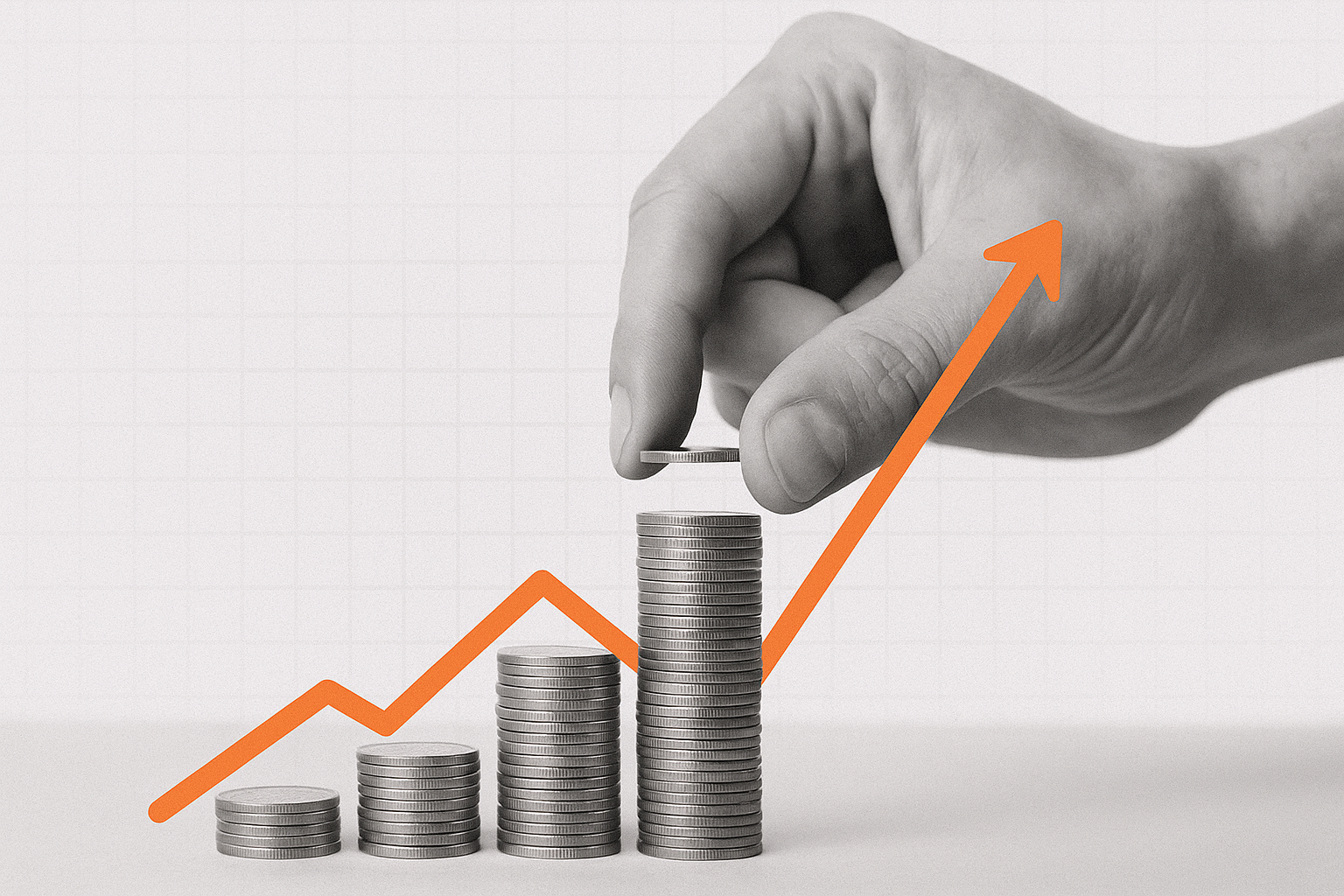
For years, publishers built their businesses on a foundation of “free” organic traffic. This model allowed them to offer advertisers vast reach at relatively low costs.
However, as this “free” traffic diminishes due to Google AI summaries and zero-click search, publishers are being forced to open their wallets, turning to paid audience acquisition tactics, such as social media ads and traffic arbitrage, to fill the gap.
This shift has a direct and predictable consequence for brands: rising CPMs (Cost Per Mille).
Publishers are no longer just content creators; they are now significant media buyers themselves. The cost of acquiring each reader is now a line item on their balance sheet, and this cost will inevitably be passed on to advertisers.
Brands that have built their media plans around the historically efficient reach of publisher networks will need to brace for impact, as their budgets may no longer secure the same volume of impressions.
Industry data suggests CPMs have risen 15-30% in key channels as publishers compete for the same paid inventory that brands traditionally dominated. This represents a fundamental shift in the economics of digital ad revenue.
A More Crowded Battlefield: Publishers as Competitors
The ripple effects extend beyond simple cost increases. As publishers pivot to paid acquisition, they are stepping directly into the same arena as the brands they once served. Publishers, who are arguably the world’s foremost experts in creating engaging content, are now competing for the same ad inventory on platforms like Meta, X (formerly Twitter), and even Google itself.
This creates a new layer of competition that will drive up costs for everyone. Brands are no longer just bidding against their direct competitors for audience attention; they are also bidding against sophisticated media organisations with deep expertise in content-led engagement.
This intensified competition for paid channels will require a higher level of strategic thinking and budget allocation from brand marketers, who must now fight harder and spend more effectively to capture their target audience.
Understanding publisher traffic strategies is now crucial for brands seeking to maintain a competitive edge in paid media channels.
The Shrinking Pie: Devalued Metrics and Modelling Mayhem

Perhaps the most concerning downstream effect for brands is the erosion of the very metrics that underpin modern marketing measurement. With less overall traffic flowing to publisher sites, the fundamental inputs for media planning and evaluation, reach and impressions, are declining.
For brands heavily invested in display advertising and content partnerships, this means their campaigns are reaching fewer eyeballs, diminishing the overall impact of their media spend. This is especially critical when considering that 78% of digital revenue for many premium publishers still comes from advertising.
This reduction in top-of-funnel activity has significant consequences for long-term performance analysis. Methodologies like Marketing Mix Modelling (MMM), which rely on historical data to correlate media spend with outcomes, are particularly vulnerable. As the effectiveness and volume of a key channel (publisher media) change, the models that have been trained on past performance will become less reliable.
Marketers may find their MMM outputs skewed, resulting in suboptimal budget allocation and a flawed understanding of their actual return on investment. The brand impression loss represents not just a tactical challenge but a strategic crisis for data-driven marketing organisations.
Navigating the New Reality: Publisher Traffic Recovery Strategies
While the challenges are significant, they are not insurmountable. This new era demands a more integrated and strategic approach from brands. It’s no longer enough to simply buy impressions; brands must now focus on building their own audiences and optimising the entire brand experience.
How Publishers Can Survive AI-Driven Traffic Drops
Brands must now think like publishers, focusing on:
- First-Party Data and Direct-to-Audience Strategies: Building direct relationships with customers through newsletters, communities, and owned content platforms is more important than ever. This direct audience engagement strategy reduces reliance on third-party platforms and provides a direct channel for engagement.
- Content as a Core Competency: Brands must invest in creating high-quality, valuable content that attracts and retains an audience. This means moving beyond traditional advertising and embracing a publisher mindset with publisher content monetisation strategies.
- Diversified Media Mix: Over-reliance on any single channel is a recipe for disaster. Brands should explore a diversified mix of paid, owned, and earned media, constantly testing and optimising their approach to recover publisher traffic.
The web is unravelling, but it is also being rewoven into a new pattern. The brands that thrive in this new environment will be those that move beyond a transactional approach to media and embrace a holistic, experience-driven strategy. The age of passive media consumption is over; the age of active brand engagement has begun.
Further Reading on Publisher Traffic Loss and Brand Advertising Disruption
Industry Analysis
- Facts: Google’s push to AI hurts publisher traffic – Digital Content Next
- Media Briefing: Publishers turn to paid audience acquisition tactics – Digiday
- U.S. Digital Advertising Pressured by AI Disruption – Fitch Ratings
Publisher Impact Studies
Strategic Responses
Related Topics
About This Article: This analysis draws on public company earnings calls, industry research from Digital Content Next, Fitch Ratings, and Detailed.com, plus reporting from Digiday, NPR, BBC News, and other authoritative sources. Data current as of November 2025.






